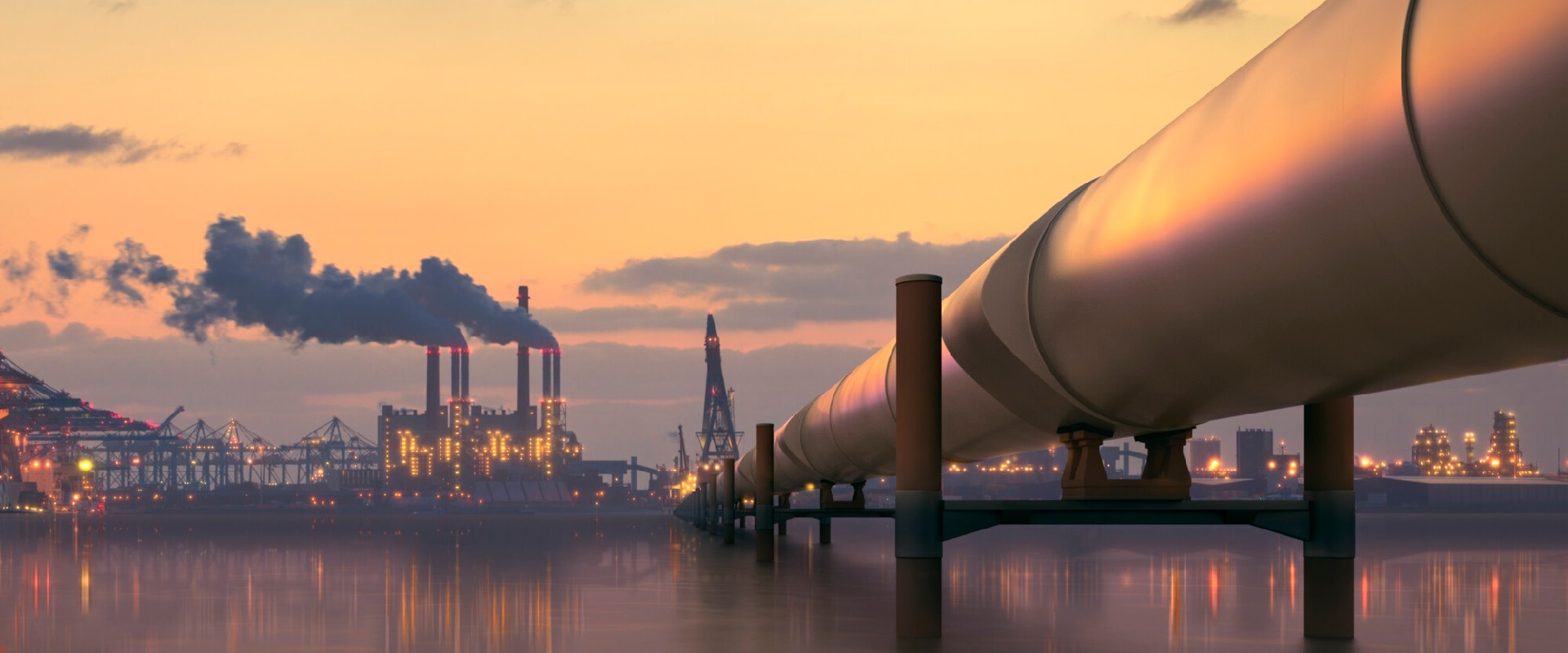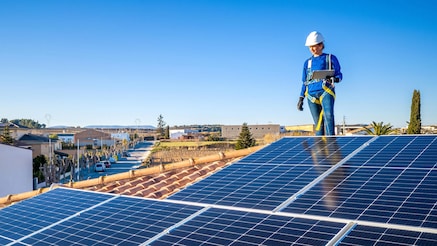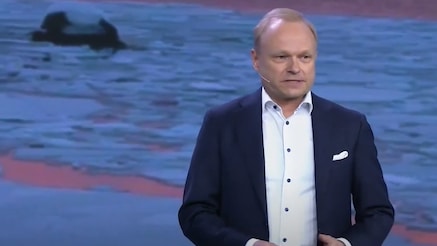How connectivity and advanced tech can help solve the energy crisis

In a world where there’s no green without digital, we look at six interesting approaches to tackling the energy crisis
With the global energy crisis deepening, California's grid operator ISO recently urged residents via text message to limit their energy use and warned that rolling blackouts could arrive. They were encouraged to avoid using large appliances and unplug unused electronics. While rolling blackouts were prevented, just hours later, more than 50,000 Californians experienced a power outage.
This isn’t an isolated incident. In October, a massive power outage in Bangladesh plunged 140 million people into darkness for over six hours. Meanwhile, some of Europe's biggest banks are preparing backup generators and doing all they can so that ATMs and online banking don't go dark. Deutsche Bank – with 1,400 buildings in Germany – is turning off hot running water in washrooms, adjusting workplace temperatures, and hitting the off-switch on all interior branch lighting overnight.
The global energy crisis has revealed our over-reliance on fossil fuels and the need to transform the grid to better support the transition to renewables. Homes and businesses also need to shift to more sustainable options. Here are some cool and curious ways connectivity and advanced digital technologies could help.
Harvesting solar energy from space
Scientists have proposed building a satellite that could harvest solar energy and beam it down to Earth to be used. While the concept – of space-based solar power – is theoretically possible and could help to solve fuel problems long term, the project won’t be easy.
Technological advancements are required, including in-space manufacturing and robotic assembly, high-efficiency photovoltaics, high-power electronics, and radio frequency beam forming. Meanwhile, studies on the effects of low-power microwaves on human and animal health and compatibility with aircraft and satellites will also be undertaken.
Although some way off completion, the project – known as Solaris – is fascinating and comes at a time when global interest in space-based solar power has never been higher. The UK has introduced its Space Energy Initiative, while the US, China, and Japan are preparing in-orbit demonstrations.

How it can help: Scientists at the vanguard of new tech are experimenting with solutions to tackle a global problem for humanity. If they pull this off, space-based solar power will be well-placed to be a source of clean, abundant, and secure energy.
Ports are plugged-in
Ports across the globe are transforming how they power ships and equipment and move goods by embracing electricity. New shore power systems allow vessels to shut down auxiliary diesel engines and plug into the land-based electrical system. The deployment of smart port infrastructure – from connected ships to predicting water and weather conditions – further expands on this success story.
Meanwhile, a study by the Electric Road Consortium suggests that an Electric Road System (ERS) is likely the fastest and most efficient way to decarbonize the UK’s freight sector. Consisting of overhead electrification wires over inside lanes of key motorways and a series of static charging facilities nationwide, an ERS rollout would result in an ERS-powered truck requiring three times less energy than a hydrogen-powered HGV while accelerating a move away from diesel.
How it can help: Transportation currently generates 17% of global emissions. Any move from fossil fuels to more efficient, sustainable power forms will help tackle the energy crisis at the source.

The double lives of electric car batteries
Governments around the world are supporting electric vehicle (EV) technology. The EU (European Union), the UK, Iceland, and Norway hope to phase out the sale of new petrol (gasoline) and diesel-powered vehicles by 2030 or 2035. In the US, California, Colorado, Massachusetts, New Jersey, and Washington are banning new gas-powered vehicle sales from 2035. India aims to have an EV fleet of 40% by 2030, and China – with the most currently in use – has set a target of having at least one in five by 2025.
While EVs are considered one of the most sustainable forms of transportation, the manufacturing process of batteries is still a cause for concern. To counter this, researchers at the Massachusetts Institute of Technology argue that used EV car batteries can be reused for at least a decade as backup storage for solar power.

How it can help: Research suggests retired EV batteries could support power grids, reducing costs during peak periods, providing backup power for places such as hospitals, and supplementing renewable energy sources like solar and wind. According to McKinsey, by 2030, retired EV batteries could provide 200 gigawatt-hours of energy storage globally each year.
AI can help reduce energy consumption
Buildings are responsible for almost one-third of total global final energy consumption. While EVs are advancing, only 20% of the buildings in 2050 will be new. Therefore, optimizing energy systems in existing buildings must take priority.
Retrofitting old buildings with AI and IoT-led solutions will make them more efficient. Access to better data, modern construction methods, and a digital-first mindset – such as using new digital survey techniques, including photogrammetry with drones to rapidly create 3D models of constructed assets – could kick-start a retrofitting revolution.
Probably the most famous example is the Empire State Building. Retrofitted with advanced techs, such as wireless sensor technology to control cooling, electricity, room temperature, and indoor air quality, the iconic New York building is a role model for retrofitting. One tenant, Skanska USA, occupying the 32nd floor, benefitted from a 57% reduction in its electricity spending compared to its previous residence.
How it can help: Many existing buildings are inefficient and energy intensive. AI and IoT (Internet of Things) applications can replace building operations with a centralized, cloud-enabled model that offers comprehensive visibility across all systems and means individuals and organizations stay on the front foot of managing energy consumption.

Microgrids provide energy savings for small communities
Saving on power is critical for homes as well as big businesses. Cost cutting and achieving greater fuel efficiency is the end game, and to get there, microgrids are emerging trends that have far-reaching implications for renewables.
In San Diego, microgrids are already in place at its port, zoo, and two military bases, but that’s not enough. The city in Southern California is pursuing eight further microgrids for city facilities, including solar, storage and EV charging. Microgrids operate independently, provide flexibility and adeptness, and can reinforce grid resilience while mitigating disturbances, even during outages.

How it can help: Microgrids could help save energy costs for homes, communities and small businesses in a time of crisis. For example, when Hurricane Sandy hit New Jersey in 2012, Princeton University demonstrated how to keep power running for residents, emergency workers, and crucial facilities when its microgrid disconnected completely and generated all the power for the campus. Like every tech initiative, though, the logistics are always complex. Our new Real Action video series sees influencers in the space try to make it work in practice.
Achieving energy goals with digital twins
Digital twins can provide sharper insights to improve decision-making by helping multiple stakeholders assess how an organization uses energy and where improvements can be made via digital replicas that accurately mimic their real-world counterparts.
Nanyang Technological University was looking to create the greenest campus in the world by meeting ambitious targets for energy efficiency, waste management, and water consumption. A digital twin helped improve the effectiveness of the campus cooling systems by analyzing alternative scenarios based on expected building performance across the campus portfolio. The results revealed that a centralized system could provide part of the solution to beating the energy crisis and reducing carbon emissions throughout the operational lifecycle.
How it can help: Digital twins can show the best pathways to a low-carbon future. They can enable the development and maintenance of smart grids, leading to faster power restoration and outage reversal. These data-driven representations of physical systems can also use IoT sensors and analytics to manage assets and resources while improving performance. Above all, digital twins, along with the above examples of connectivity and advanced technologies, will become an essential tool in tackling immediate energy issues as well as addressing the climate crisis.

Get more insights on how to build a sustainable future

Real Action: Green, Local Energy – Microgrids
Our experts seek to answer this question: how can we make renewable, resilient energy supply more accessible?

